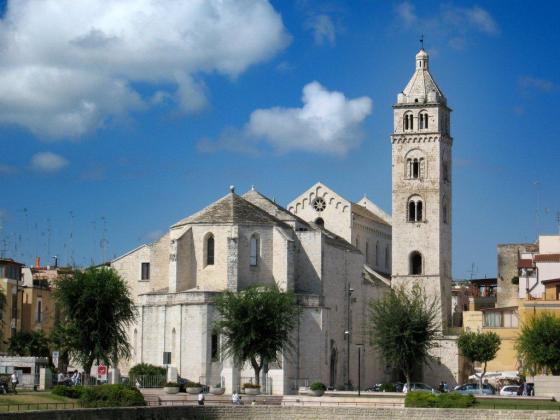The basilica of Santa Maria Maggiore is the cathedral
of Barletta, formerly the cathedral of the archdiocese of Barletta and today
the co-cathedral of the archdiocese of Trani-Barletta-Bisceglie. Located in the
city’s historical centre, at the end of Via Duomo, it is the oldest hub of the
city’s religious life, as well as its urbanistic pivot: the design of the urban
fabric shows the centripetal force of its mother church.
It was built on an earlier Paleochristian church in
the 12th century and later enlarged in the 14th century.
The building is made up of two clearly distinct parts:
the front one is typically Romanesque and predates the second, rear one which
has distinct Gothic features instead. The church is the result of a series of
architectural stratifications over the centuries, dating back to pre-Christian
times. The start of construction of the current building dates back to 1126 and
continued until the 14th century.
First a distinguished collegiate church of Barletta,
over the centuries claiming exemptions and autonomy from other jurisdictions,
it was elevated to cathedral of the archdiocese of Barletta-Nazareth by Pope
Pius IX with the papal bull Imperscrutabili Dei of 21 April 1860. It has been a
minor basilica since 1961. Since 1986 it has been co-cathedral of the
archdiocese of Trani-Barletta-Bisceglie.
Worship is officiated by the canons of the chapter of
Santa Maria Maggiore.

